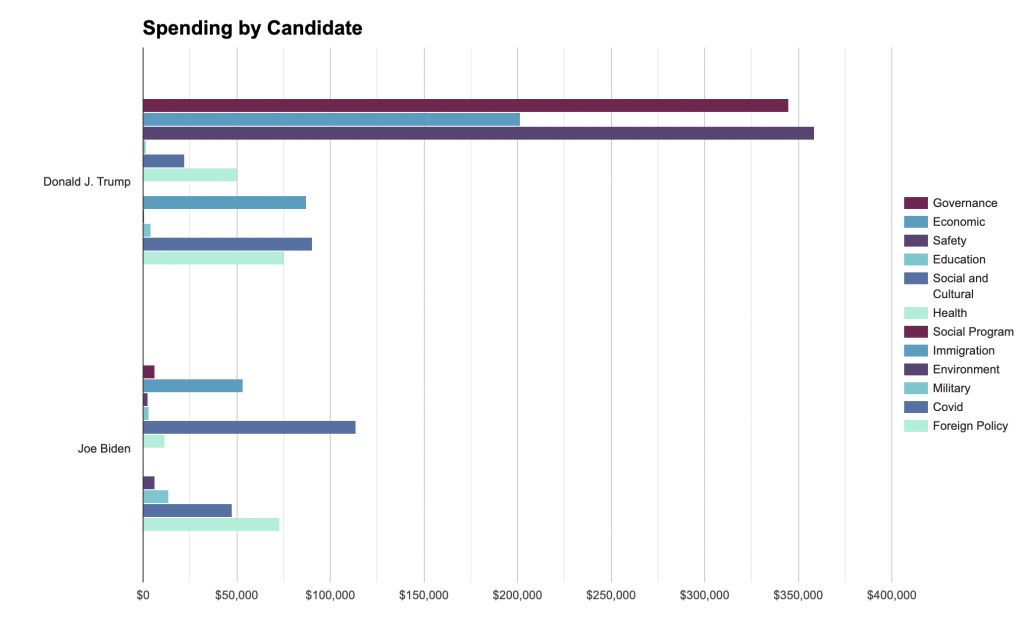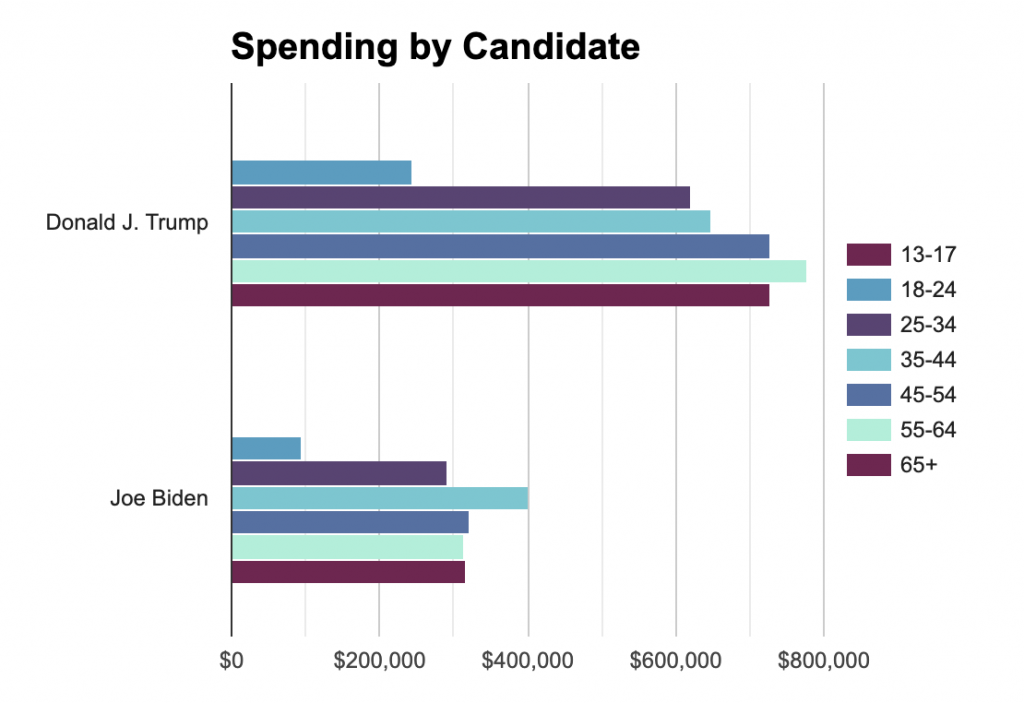
For the first time since 1960, the candidate elected President did not win the state of Ohio. Ohio has been considered one of the most significant swing states for decades, as people looked to Ohio as a predictor for how the rest of the nation will vote. In recent elections, Ohio has leaned consistently red at the national, state, and local levels. The Republican party has held the majority in the governor’s office and both chambers of the state legislature since 2011 and has held the majority in all 3 chambers for a total of 22 years since 1992.
The voter demographics in Ohio are also a major contributing factor to the state’s party leaning. The population of Ohio consists of more older white citizens without college educations than the U.S. average, with over two-thirds of the 2020 voters aged 45 or older. These demographics nationwide have shown to favor Trump over the Democratic candidates, giving him an edge. While the population of Ohio and its demographics have continued to stay consistent, the rapidly shifting demographics of states like Georgia and Arizona have made them more competitive than Ohio. This demographic data and voting consistency in conjunction with the election results in 2016 and 2020 have political analysts questioning Ohio’s swing-state status.
Like other battleground states, Ohio has received a significant amount of money in Facebook ads from both candidates. Despite Biden outspending Trump in overall spending including all 50 states, Trump has significantly outspent Biden in Ohio, spending an estimated $3,743,365 on ads between June 1 and Nov. 8. Biden spent significantly less, spending an estimated $1,739,297. As polling predicted a Biden victory in Ohio, the Trump campaign’s focus on Ohio is likely a result of his weak polling and Ohio’s history of predicting who will be heading to the White House.
Which Message Topics Matter Most?

Just as the candidates’ spending differs in Ohio so does the message topics of their advertisements. Across all states, Biden is spending the most on Social and Cultural and Economic ads. In Ohio, his greatest spending category continues to be Social and Cultural at $113,663. However, he is spending significantly less on Economic ads, dropping it to the third spot behind Foreign Policy. According to Ohio exit polls, 56% of voters stated that they think Trump is better suited to handle the economy. With threats of “Democratic socialism” and “radical liberalism” coming from the ads Republican candidates, statements like these aim to damage the credibility of Biden’s economic plans. A decrease in economic ad spending might be an effort to shift the focus on other issues Ohio voters cared about. When asked about racism in the U.S., 66% of Ohio voters stated that racism was one of many important problems that they care about. Ads discussing this issue fall under the Social and Cultural category, a heavily targeted category by Biden. A sample of one of these ads ran in Ohio can be seen below.
Trump, on the other hand, seems to have a different approach to reaching Ohio voters. His largest ad spend is on safety related ads, followed by the governance topic. His overall spending including all states differs from his focus in Ohio, as his overall spending reflects a greater focus on governance ads than safety. 11% of Ohio voters listed crime and safety as the issue that mattered most to them when deciding who to vote for. While this isn’t an overwhelmingly large statistic, 77% of those who believe crime and safety is most important voted for Trump. In a Republican leaning state, appealing to his base and what issues matter to them seemed to be the strategy of the Trump campaign.
How Age Influences Ad Spending

When it comes to ad spending by age demographic, both candidates have different strategies in Ohio. Exit polls from Ohio show that 59% of those who voted were above the age of 45, with 37% between the ages of 45-64 and 22% 65+. The polls also showed that 16% of the voters were ages 18-29 and 24% 30-44. The younger demographics, those 18-29 and 30-44, favored Biden with 60% of those 18-29 and 54% of those 30-44 voting for Biden. Trump carried those 45+, with 55% 45-64 and 62% 65+ voting for him.
Both candidates’ ad spending reflected the leanings of certain age groups. Across all states, Biden allocated the most ad money towards those 35-44 and 25-34, spending the least on those 18-24. Trump allocated the most money towards those 55-64, 65+ and 45-54 years of age. In Ohio, on the other hand, these patterns differed. Biden spent the most money on those 35-44 at an estimated $401,963, mirroring his overall spending and catering to the age group that had the biggest turn out for him shown in the exit polls. However, the rest of his spending is fairly uniform, all around $300,000 aside from youth voters (18-24) who received the least amount. Trump also continued to cater to his base of older voters, especially those 55-64. Trump performed well in the preliminary polls with older demographics, which is likely the reason for his spending increases on this age group. The exit polls and their connection to the campaigns’ strategies is either the result of a very strong understanding of voters by the campaigns, or were influenced greatly by the candidates’ advertising.
With Ohio’s future swing-state status now under question, the demographic makeup of the state and its consistent favoring of Republican candidates at the local, state, and national level the past few years may persuade Democratic presidential candidates to devote fewer resources to the state. In 2020, Ohio proved to no longer be necessary for a Democratic presidential victory, as other unexpected states have emerged as key battlegrounds. The shift in focus on Ohio can be seen in the candidates’ ad spending, as neither candidate had the state in its top five battleground states when assessing spending across the 13 swing-states. Biden’s significant lack of funding allocated to the once crucial state of Ohio and Trump’s desperate attempt to keep the state red to have a fighting chance was very revealing of the probable results even before votes were cast. So will Ohio remain a swing-state? Only time will tell.
All data is accurate as of date of publication. All spending and impression amounts are estimates based on data provided by the Facebook Ad Library API. The estimates provided in the Message Type and Message Topic sections are for Trump and Biden’s main Facebook page only. Feature Image by Robert Conklin on Unsplash

